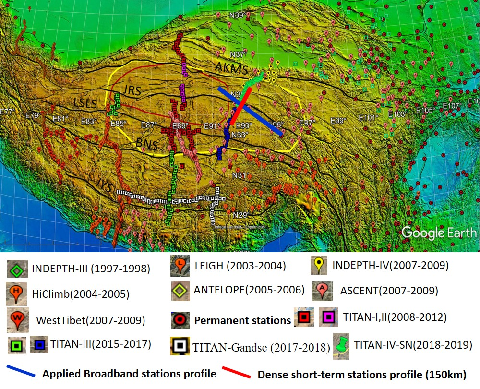Unraveling the Dynamic Processes beneath the Northern Tibetan Plateau: Paleozoic Collision and Cenozoic Destruction of Mantle Lithosphere and Plateau Uplift
We propose a collaborative Sino-German seismic experiment in the northern Tibetan plateau in order to address fundamental questions on the processes that modify and destroy continental lithosphere and control lithospheric dynamics beneath orogenic belts. Northern Tibet is characterized, with respect to the rest of Tibet, by the widespread Cenozoic volcanism, poor Sn wave propagation and low Pn wave velocity, low seismic velocities in the shallow mantle and strong seismic anisotropy. Two end member models were proposed to explain the these observations beneath the northern Tibetan plateau involve (1) underthrusting, stacking or pure-shear thickening of Indian and Eurasian mantle lithosphere and (2) delamination or convective removal of Eurasian mantle lithosphere. A further question relates to the reconstruction of the polarity of Paleozoic Tethys ocean subduction, which can be resolved from examining the deep structure of Paleozoic sutures. The resolution of previous experiments in Tibet was not sufficient to resolve theses questions and large discrepancies remain in the estimated seismic velocities and thickness of the lithosphere.
Here, we plan to deploy and analyse two linear passive-source seismic arrays in northeastern Tibet: (1) a NW-SE broadband array in Hol Xil and northern Qiangtang, consisting of 50 stations with a station spacing of 10 km; and (2) a dense N-S array across the Jinsha River Suture, comprising 300 short-period stations with a station spacing of 500 m. A variety of seismic methods will be applied to the broadband array, including receiver functions, teleseismic body wave tomography, surface wave tomography using ambient noise and earthquakes and shear wave splitting to explore seismic structures in the crust and mantle lithosphere and to determine the thickness of the lithosphere. We will apply and develop methodologies that exploit the coherence of waveforms at short period, for example to obtain detailed images of the Jinsha River Suture using stacked cross-correlations of the continuous wavefield and distinct converted phases from teleseismic earthquakes.




